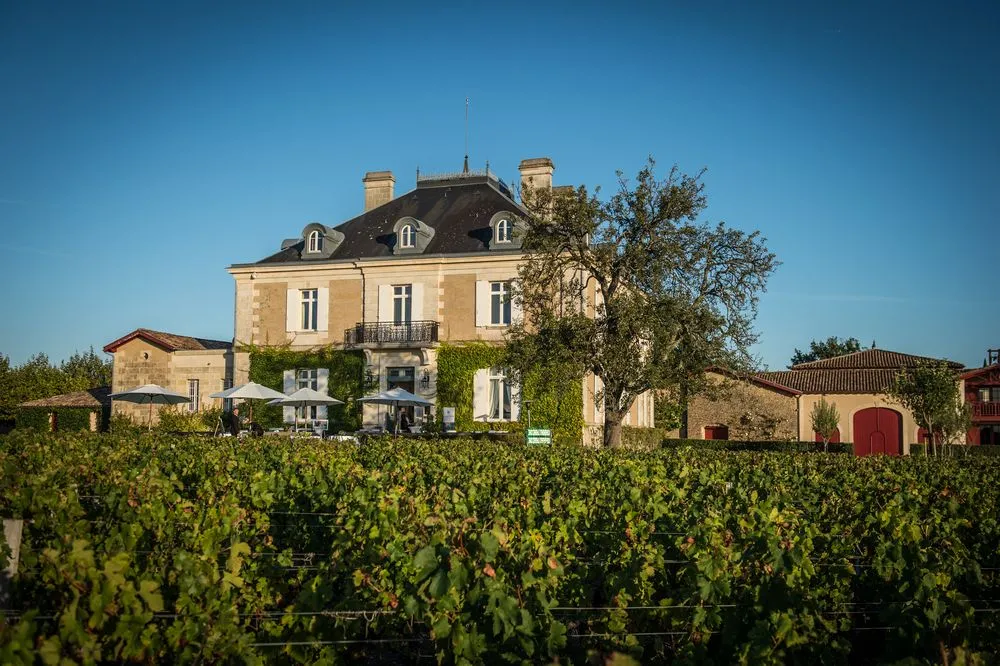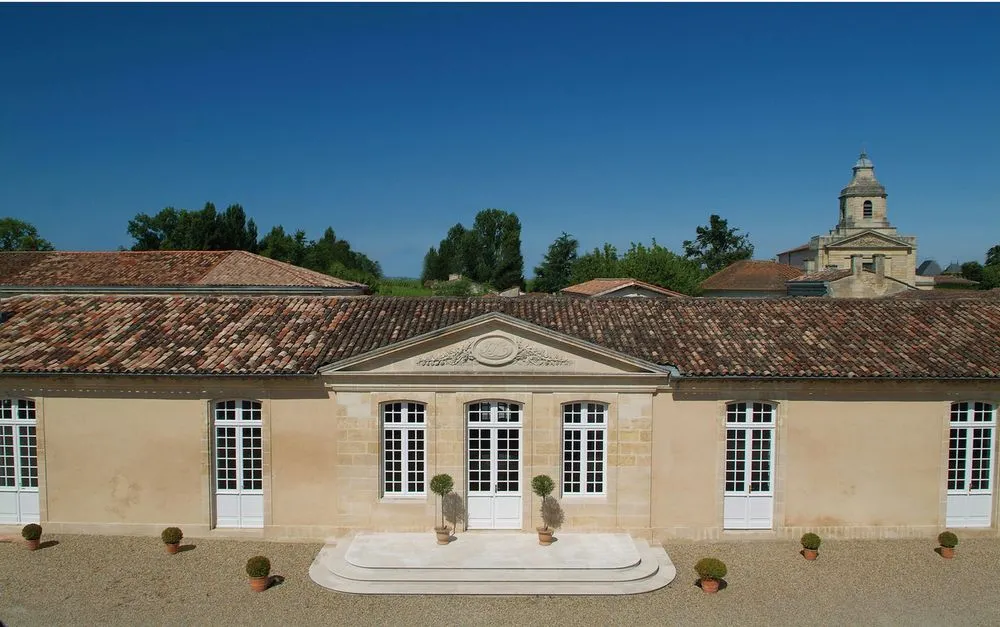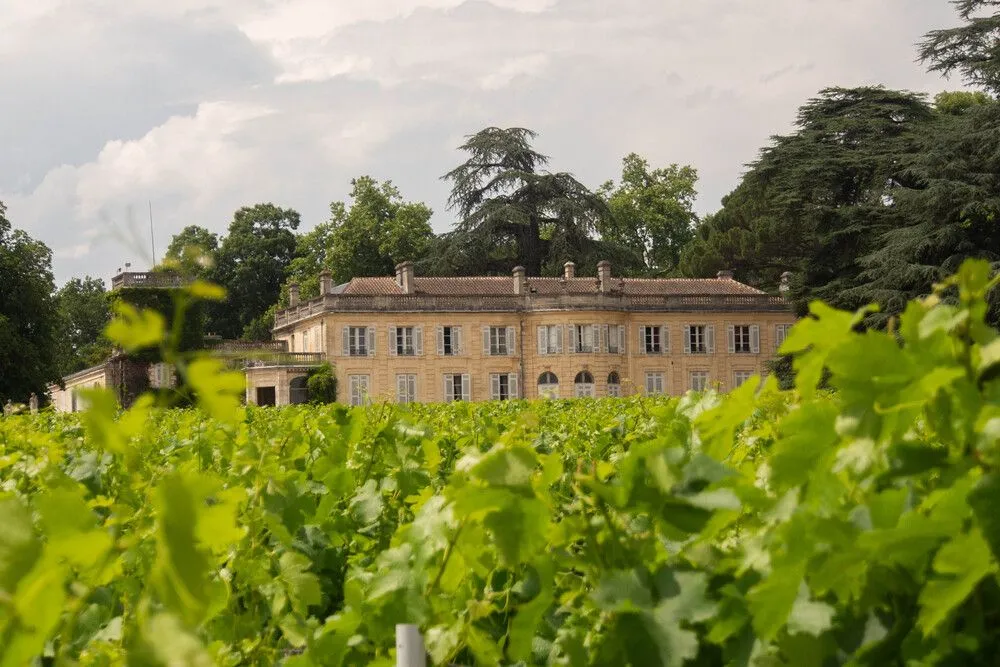This is an opportunity to have a true ‘Wine, Heritage and Landscape’ experience. Every appellation is special in its own way! Find out about the work of a winemaker on-site and follow the vinification process step-by-step in the wine storehouse.

The most beautiful châteaux of Bordeaux
Lined with magnificent châteaux, the Bordeaux Wine Routes are worth the detour. Whether medieval, renaissance, gothic, classical, or contemporary, the region is home to estates from all architectural styles and periods. Here is our selection of the most beautiful wine chateaux of Bordeaux.
Le Grand Verdus, Entre-Deux-Mers
The Verdus is impressive in every sense of the word! Located in Sadirac, it is expertly managed by Thomas and Edouard Le Grix de la Salle. Far from resting on its laurels, the estate reinvents itself daily: vinification in stainless steel and concrete tanks, amphorae, and Burgundy barrels, a transition to organic farming for its 115 hectares of vines in 2023, and the planting of grape varieties "outside Bordeaux" (Syrah in 2019, Chenin in 2021). Discover unique cuvées through tours, tastings, and even charming picnics!
Château de Malherbes, Entre-Deux-Mers
Once upon a time, a magnificent 16th-century castle was built by a knight named Guilhem de Malherbes. Years later, the fairy tale continues for this exceptional vineyard located in Latresne. Spanning 12 hectares, the vineyard boasts a remarkable terroir. Certified High Environmental Value (HVE), Château de Malherbes can also take pride in its new gravity winery, offering visitors an immersive experience through the various stages of winemaking and all five senses…

Château de Carmasac, Entre-Deux-Mers
Visiting Château de Carmasac is like taking a lesson in history. Built in the 14th century and later modified in the 16th and 18th centuries, it comprises a medieval fortress adjoining an 18th-century residence. The Black Prince, son of Edward II of England, is said to have stayed here to defend his father's lands. Today, new "photovoltaic" cellars are writing the contemporary history of this estate, certified High Environmental Value and ISO 14001 for its environmental management.
Château Toulouse Lautrec, Entre-Deux-Mers
Once the cocoon of the famous artist it is named after, the former Château Malromé was built in the 16th century and is surrounded by a vineyard that has been in operation for 500 years. Centuries later, the Château Toulouse Lautrec offers guided tours of the painter’s apartments, along with wine-related visits followed by tastings. Certified High Environmental Value, it is in the process of converting to Organic Farming and is committed to ecological transition.
Château Saint-Georges, Saint-Emilion, Pomerol, Fronsac
Since its first stone was laid in the 13th century, Château Saint-Georges has seen many notable figures, including Victor Louis—the architect of Bordeaux's Grand Théâtre—who contributed to its neoclassical style. From its feudal past, it retains four corner towers overlooking a garden of flavors adorned with aromatic plants and delicious fruits. You can explore all this through classic visits, winemaker stages with countryside lunches, fun approaches to the world of wine, and epicurean tastings at the barrel with cheese and charcuterie platters.

Château Siaurac, Saint-Emilion, Pomerol, Fronsac
The history of Château Sauriac is shaped by several men since the 18th century. While Pierre Brisson, the first owner, is credited with the courtyard, outbuildings, and the "Les Bois percés" landscape, it was his son Benjamin who focused on the main house. His grandson Joseph dedicated himself to the vineyards, while Louis Bernard Fischer—landscape architect of the Public Garden in Bordeaux—designed the English-style landscaped park, classified as a Remarkable Garden in 2015. The appellation was created in 1936. Today, Château Siaurac is the largest estate with 46 hectares of vines.
Château Le Dôme, Bordeaux
A true oddity in the lush countryside of Saint-Émilion, the Château Dôme is a 40-meter-diameter, non-flying object that captivates visitors. Designed by award-winning architect Lord Norman Foster, it is the newest addition to the region. Built under the guidance of businessman Jonathan Maltus, the Dôme features cutting-edge winemaking facilities combining raw and natural materials. Step inside this vessel and taste its rare single-parcel wine.

Château de Portets, Graves et Sauternes
Awarded the 2024 "Best of Wine Tourism" in the Architecture and Landscape category, Château de Portets has been equally nurtured by nature and by human hands. Once a fortress, it has gracefully traversed the centuries and proudly retains a Renaissance façade listed in the Inventory of Historical Monuments. An elegant 14th-century Tour de Gascq, a park with century-old trees, and breathtaking views of the Garonne complete this extraordinary ensemble. The icing on the cake: the estate organizes numerous unusual activities such as treasure hunts for children, themed tours, film screenings, a scenographic space, and a tactile table…

Château Haut-Bailly, Graves et Sauternes
At the top of a gravel rise, a vineyard has flourished for over four centuries on 30 hectares. This vineyard belongs to Château Haut-Bailly, a Classified Growth of Graves, which unfolds through various offerings and attentive hospitality from the entire team. Indulge in tastings and various tours, including classic, gourmet, collector, and château visits. Certified High Environmental Value, High Environmental Quality, and Living Heritage Company, the estate is also committed to biodiversity preservation.

Château Lafaurie-Peyraguey, Graves et Sauternes
Some seemingly different worlds are sometimes meant to work together. Such is the case with Château Lafaurie-Peyraguey and the Lalique crystal factory. The first Grand Cru Classé of Sauternes in 1855, the estate was taken over in 2014 by Silvio Denz, owner of the famous crystal brand. In the historic cellars, you can admire the Lalique crystal barrel, a unique piece created to celebrate the estate's 400th anniversary. This is also an opportunity to learn about the vineyard’s history, its wines, and the fusion between a renowned crystal factory and a Premier Grand Cru Classé.

Château Desmirail, Médoc
One of the 21 Grands Crus Classés of the renowned Margaux appellation, Château Desmirail has been managed by Denis Lurton since 1992 and spans 38 hectares. Nestled in the village of Cantenac, the estate opens its gates for a variety of tours: classic, olfactory, cheese and charcuterie, Green Bubble, and carriage rides. It’s the ideal way to discover all the estate's secrets and taste its wines of unparalleled finesse and elegance.

Château d'Agassac, Haut-Médoc
It appears to be straight out of a fairy tale. With its slender towers, conical roofs, and water-filled moats, Château d’Agassac is striking. Listed as a Historical Monument, this former vineyard entity is one of the oldest in the region. Located in the Haut-Médoc AOC, the estate has established guided tours followed by tastings, as well as bucolic picnics. In addition to its CSR charter, the property is certified High Environmental Value, Terra Vitis, and ISO 14001 for its responsible viticulture and environmental management.

Château Pichon-Baron, Médoc
We would need paragraphs to tell you the fascinating story of this castle located in the south of the Pauillac appellation. The 2nd Grand Cru Classé in 1855, Château Pichon was established in the 17th century, but it wasn’t until 1851 that the majestic castle, inspired by Renaissance style, was completed. Today, it covers 73 hectares and benefits from very high-quality gravel soils. For more information, join private tours that will take you from the vineyard to the cellars, culminating in a tasting of three vintages.
Château du Taillan, Bordeaux
The contemporary history of Château du Taillan is written by women. Five sisters are at the helm of this property certified High Environmental Value Level 3, located at the gates of Bordeaux and Médoc. Nestled in a 100-hectare wooded park planted with century-old trees, the vineyard flourishes. The cellars, castle, and altarpiece, all classified as Historical Monuments, are revealed during visits with tastings organized in the estate's "concept-store" boutique.

Château Tayac, Blaye et Bourg
The Château de Tayac has a true epic story, chosen by the Gallo-Romans to plant one of the first vineyards in the region. The site was also annexed by the famous Black Prince, who, in the 14th century, transformed noble houses into fortified castles, including Tayac. Razed at the end of the Hundred Years' War, the castle still retains its watchtower, which overlooks the vineyard. It wasn’t until 1827 that the current Renaissance-style château was built. After two decades of abandonment, it was purchased in 1959 by Pierre Saturny, who transformed it into the jewel of the AOC we know today.
Book your wine châteaux visit




























